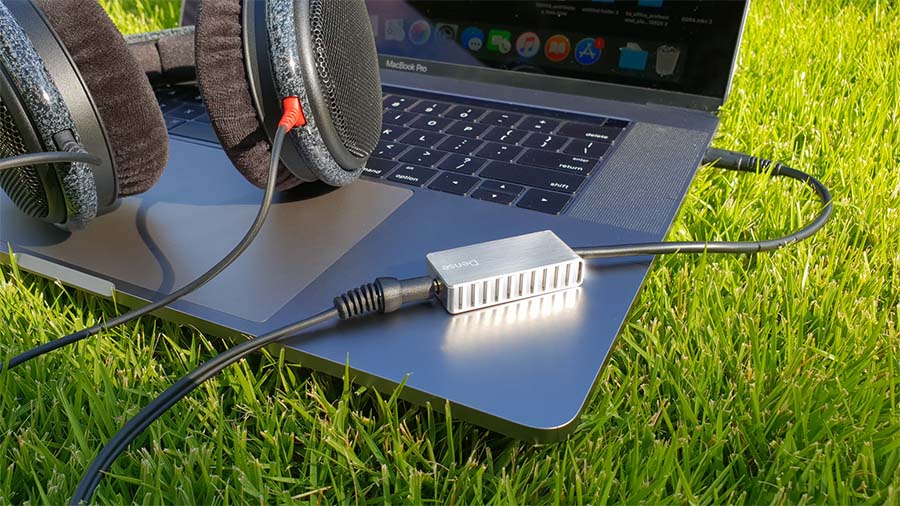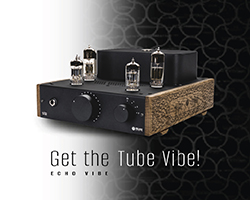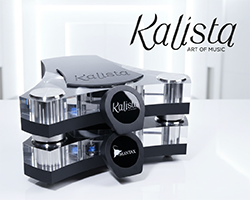Kiran Ram takes a listen to the diminutive Adapt portable DAC from Dense and costing $209.99.
The Adapt DAC from the kick-starter company Dense promises to deliver HiFi audio on the go with its tiny new products; the $209.99 Reference spec and more budget friendly Standard spec coming in at $109.99.
Adapt Reference is compatible with Android, iOS, Mac, Windows and Linux devices, providing an output power of up to 2.0Vrms with a sampling rate of 44.1kHz 48kHz, 88.2kHz, 96kHz, 176.4kHz, 192kHz, 352.8kHz and 384kHz at a Bit Depth of 16bit to 32bit.
APPEARANCE AND BUILD
As far as packaging goes it’s a simple, clean experience, the square card box fastens with a magnet and beneath lies its full content, providing you with everything you need and nothing more, a quick introduction manual, USB C cable and the DAC itself, no messing around. iPhone users will therefore require the camera adaptor to connect to their devices, however since only iPhones are using lightening, I have no complaints. With a price starting at over $100 I would have expected to receive some kind of case or at least a carry bag to aid portability, especially since this is one of the products main selling points and it is remarkably tiny.
The Reference Spec which I have here is finished in “Cool Grey” and is made from an anodized aluminum housing, giving the product a premium yet still stupidly lightweight construction coming in at just 15grams regardless of which spec you choose. This negligible weight means you forget the Adapt is even connected and it feels simply like an extension of the headphones cable. Along the edges, the device has what Dense refer to as “Twin aluminum heat sinks” and while the device did initially warm up within the first 10 minutes of playback, it did not exceed much beyond being simply warm to the touch and certainly remained cooler than my laptop which boils my legs as I write this. A small LED indicator sits to the left of the USB-C port and remains on during playback; however, turns off again as soon as playback is paused indicating the device has entered standby.
USER EXPERIENCE
In case you had not already realised the Adapt Reference is tiny and this makes it even harder to understand just how it manages to perform quite as well as it does. Since the device is aimed at mobile devices I naturally plugged it straight into my phone, this time remembering to turn on OTG storage and we were away. All of the playback was through Qobuz at 24-Bit Hi-Res since using the Adapt Reference on MP3 or Spotify, while perfectly capable, seemed slightly overkill. I gravitated as I always do when trying audio products for the first time to; “Slave to the Rhythm”, by Michael Jackson due to the harsh piercing vocals. The Adapt Reference somehow seemed to provide yet more detail and animation making it feel as though it was being sung right in front of me, partly due to the ESS 32bit SABRE DAC.
Mixing it up a bit I wanted to see how much the claimed boost up to 2.0Vrms from the smartphones standard 0.6Vrms will compliment a more bass-heavy track. With “Lick” by Offset the lows are strong and steady throughout; however, after listening to just how much more powerful the vocals of the previous song were compared to the standard smartphone experience I was left feeling slightly underwhelmed. While the Adapt reference does ensure the sound is extremely clean thanks to the Twin Ultra-Low Jitter Oscillators in which Dense prides itself, the quality of the details in the vocals and highs seemed to distract from the lower notes which make the song so catchy.
Continually switching between my phone’s 3.5mm jack and the Adapt Reference made the difference all the more significant and one song which illustrated this perfectly was “Take on the World” by You Me At Six. The Adapt highlighted so many drum notes and elements of the vocals which I simply could not find when listening through the headphone jack alone.
CONCLUSION
Dense promises to bring “A whole new listening experience to all music lovers”, which is certainly a bold statement, yet one which it very nearly upholds. The performance which it delivers in a package weighing little more than a biro is simply remarkable, especially in the crystal-clear vocals and highs… it’s just a shame about the slightly underwhelming lows.
AT A GLANCE
Build Quality: Solid Aluminum construction which is crazily light
Sound Quality: A vast improvement over audio direct from your mobile device
Value for Money: While it loses some features such as a volume rocker and direct USB A connectivity, it comes in much cheaper than rivals and provides true portability
Pros: Unrivaled portability. Premium Materials. Outstanding clarity.
Cons: Lack of carrying accessories. Lows do not match the high standards set by the vocal performance.
Kiran Ram
Review Equipment: OnePlus 5T, Grado Labs Prestige Series SR 80 32Ohm, Qobuz Hi-Res 24-Bit 192 kHz
















































































































































































































You must be logged in to leave a reply.